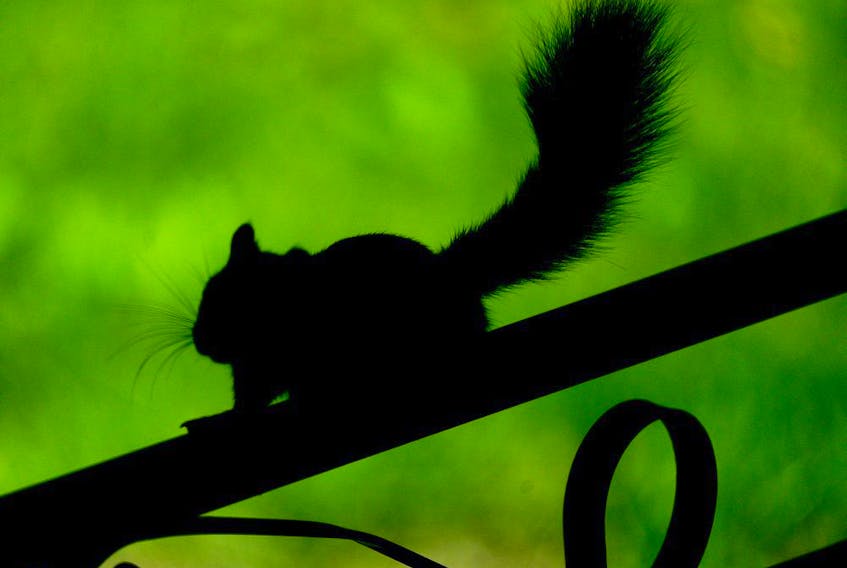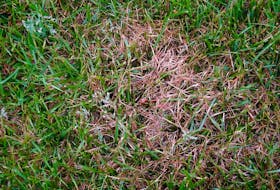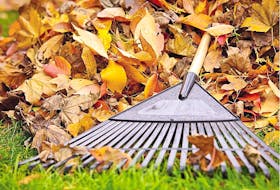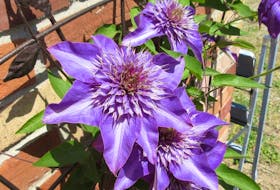Q:
Thank you for your knowledgeable advice on so many gardening problems. My problem is with my big cedar tree. I have noticed great strips of bark missing
from some of the branches.
These branches are not close to the ground, but half way up the tree. My arborist mentioned it looked like the work of rodents, but didn’t seem terribly concerned. I worry that without the protective bark, many branches will die. Is there anything I can spray or paint on the branches to protect them and to deter the rodents (mice/squirrels) from damaging my tree?
A: Thank you for your kind words. Without knowing the actual size of the trunk of your cedar this is a bit of a more difficult question to answer.
However, even with a larger tree you should still be able to apply a product called tree guard. This is a commercial product that is used to wrap around the trunk of a tree. It will protect the bark from rodent damage.
It is meant for use on trees with small to medium sized trunks but you may be able to adapt it to a larger trunk. If your trunk is too large then try using a fine wire mesh in a circle around the trunk to protect it.
Q: We have a number of well-established Strawberry Rhubarb plants that have given us wonderful rhubarb for many years. In mid-July of 2019 the underside of the leaves became covered with, what appears to be, black aphids. I use insecticidal soap which appeared to do nothing.
I pulled all of the rhubarb and put it in the garbage. I covered the patch with Eco-Way Bug Killer. This past spring the rhubarb grew nicely and by mid-July was again covered with aphids. I have also put diatomaceous earth and egg shells around the plants.
Do you have any suggestions for me? I want to get rid of these aphids for good and not have the same problem in 2021.
A: The insecticidal soap will work but there are several tips:
• Monitor the plants in the spring and at the first sign of aphids apply the insecticidal soap. You have to be vigilant. They reproduce so rapidly that if you wait for even a day or 2 it will be a full invasion
• Reapply the insecticidal soap every 2-3 days for at least 2 weeks. These little critters are hatching new members all the time so hitting them with regularity is the only way to control them.
• Monitor the rest of the summer
If you are going to use diatomaceous earth you need to dust the tops and bottoms of the leaves. You really need to be using a duster to do this. If the earth gets wet it will need to be reapplied.
Q: Your advice on a previous gardening question provided a veritable home run. I’m hoping you can help me with another.
Two years ago I planted a couple of peonies. Neither has yet produced any blooms. The plants are in a sunny spot, against a white fence, have good soil and are fertilized monthly (all-purpose flowering plant fertilizer).
The plants themselves are bushy and healthy. But, alas, no blooms to date. So what’s up? Am I doing something wrong or do I just need to be patient for another year (or two, or three. Or…)?
Thanks for whatever your advice you might provide. And keep up the fine work on your Journal gardening column: It’s a weekly ‘must read’.
A: Thank you for being such a faithful reader. I think the problem with your peonies is you may have planted them too deeply.
The top of the roots of the peony should not be planted deeper than 5 cm below the surface of the soil. If it is then the plant will not bloom.
The other issue might be something as simple as it being too young. Sometimes peonies do take 3-4 years before they bloom.
E-mail your questions to [email protected] He is the author of Just Ask Jerry. To read previous columns, click here .
Copyright Postmedia Network Inc., 2020









